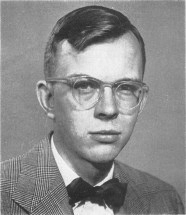Newton Morton
| Newton E. Morton | |
|---|---|

Newton Morton in the 1950s
|
|
| Born |
December 21, 1929 Camden, New Jersey, United States |
| Residence | Southampton, England |
| Nationality | American |
| Fields | Genetic epidemiology |
| Institutions | |
| Education | |
| Alma mater | |
| Known for | Founder of the field of genetic epidemiology |
| Influences | James F. Crow and Sewall Wright |
| Notable awards | William Allan Award (1962) |
| Children | 5 |
Newton Ennis Morton (born 21 December 1929) is a retired American population geneticist and one of the founders of the field of genetic epidemiology.
Morton was born in Camden, New Jersey. When he was three months old, his family moved to New Haven, Connecticut. His interest in science started at an early age, when he would collect butterflies, thinking he wanted to be an entomologist. Morton attended Hopkins High School, later transferring to Swarthmore College for two years. He lost enthusiasm for entomology, so instead he decided to pursue a career in genetics after being inspired by Dobzhansky's book, Genetics and the Origin of Species.
After marrying a woman from Hawaii, Morton decided to attend the University of Hawaii to earn a BA in Zoology, finishing his degree in 1951. He completed a thesis on Drosophila at the University of Wisconsin, but he was more interested in the work of James F. Crow and Sewall Wright. Morton then worked with Crow on the Atomic Bomb Casualty Commission in Japan during 1952–1953. This inspired him to pursue a career in human genetics. He earned a PhD in genetics from the University of Wisconsin in 1955.
Morton's career began in Japan, working on the Atomic Bomb Casualty Commission. He researched the effect of exposure to atomic bombs, including the effect on first-generation offspring. He published papers on the linkage of blood groups with diseases, nonrandomness of consanguineous marriage and the inheritance of human birth weight. In 1955–1956, Morton was made a National Cancer Institute Postdoctoral Fellow at the University of Wisconsin. He worked at the university, first as an assistant professor in 1956, later becoming an associate professor in 1960 for two years. At the university, Morton conducted a study of over 180,000 births.
...
Wikipedia
